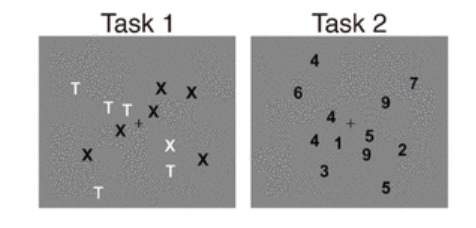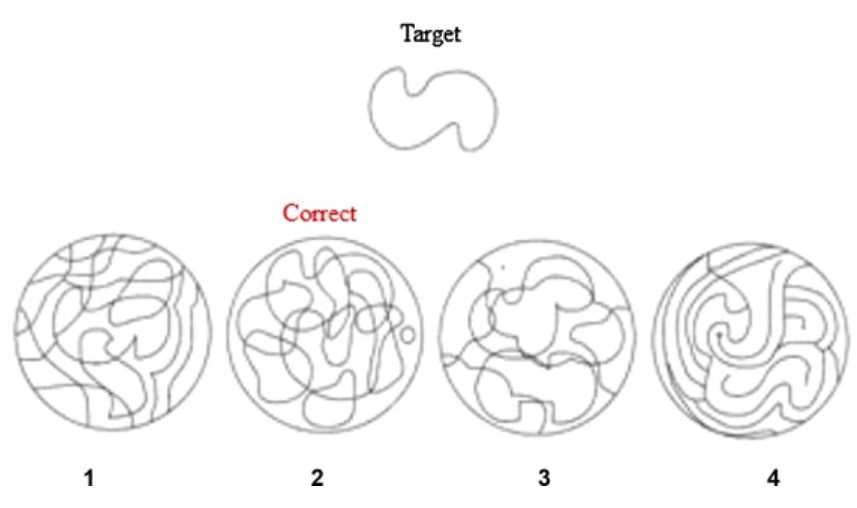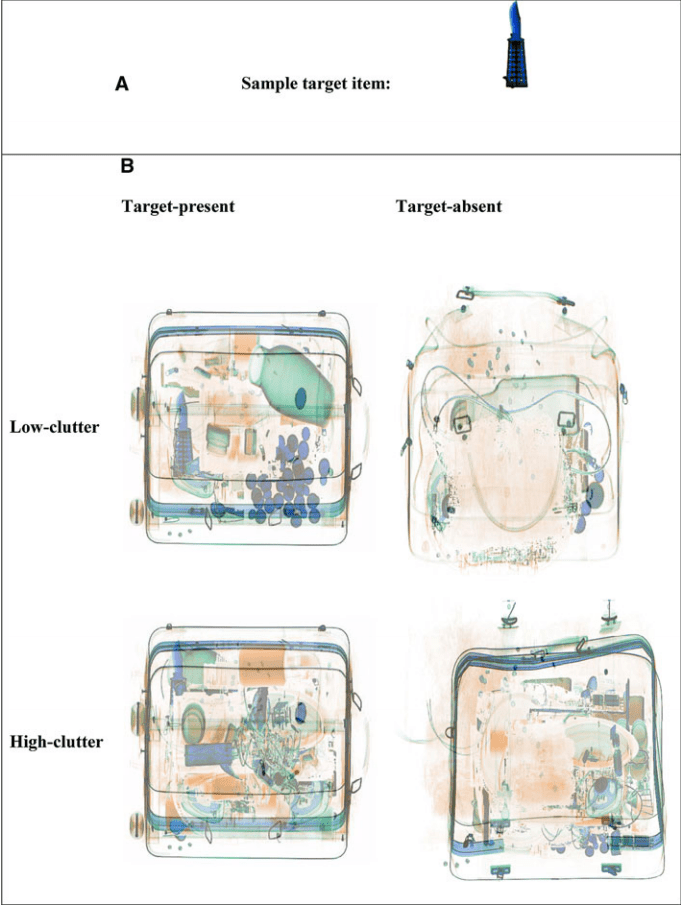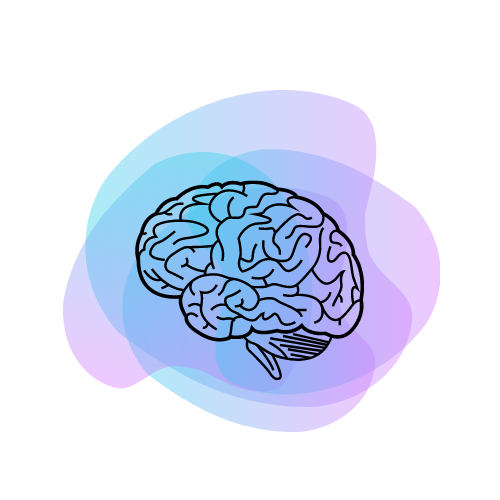Overview
- Autism Spectrum Disorder (ASD) is a neurodevelopmental disorder that is characterised by specific behavioural symptoms that include social-communication difficulties, hyper/hypo sensory sensitivities, and repetitive behaviours.
- Recent research has focused on the strengths that come with this disorder and not just the impairments.
- Autistic individuals are known to outperform typically developed individuals in visual search tasks.
- A visual search task generally requires a participant to actively scan an environment for an object or a feature (target) among other features (distractors).
- Researchers overwhelmingly have found that autistic individuals are both faster and more accurate at visual search tasks.
- Researchers have also found a relationship between superior search abilities during infancy and severity of later autism symptoms.
- Autistic individuals have also shown superior performance in many other tasks such as block design, mental-rotation, and first-order contrast detection tasks as well (these are only to name a few!)
- Autistic individuals also did better in a practical version of the visual search task (luggage screening task).
- Perceptual enhancement and atypical attention are two proposed theories that are used to explain enhanced visual search skills in ASD.
The Diagnostic and Statistical Manual of Mental Disorders (DSM-5) describes Autism Spectrum Disorder (ASD) as a developmental disorder that is characterised by specific behavioural symptoms, that include social-communication difficulties, hyper/hypo sensory sensitivities, and repetitive behaviours. Whilst most published research has focused on the impairments in this disorder, recent research has attempted to illustrate the strengths as well.
A lot of this enhanced performance research comes from visual search tasks. The first evidence for superior performance in ASD came in 1998 by Kate Plaisted and her colleagues. Plaisted et al. (1998) showed that children with ASD showed faster reaction times in feature-conjunction tasks when compared to typically developed (TD) age-matched children. However, such research papers that showed enhanced performance in ASD did not receive much attention until much later. Papers that have been published in the recent years have also suggested that clinicians can use these superior performances in visual search tasks as a means of diagnosis for ASD. It is also fascinating that these superior performances in search tasks are observed at a very young age as well (as early as 9 months!). But before we get into the details, what exactly is a visual search task?
Enhanced Ability in Visual Search Tasks
A visual search task generally requires a participant to actively scan an environment for an object or a feature (target) among other features (distractors). Below is an example of a visual search task. In the image, ‘Task 1‘ is a conjunction task in which the target (the white X) is in the same colour as the distractors (white T’s) and is also in the same shape as the other distractors (black X’s). If you were to do this task, you wold be required to report the white X as quickly as possible. ‘Task 2‘ is a hard search task. In this task, you would be required to report the number ‘9’ as this number is repeated twice during the task. In other words, in this task you report the redundant number. There are many versions and variations of the visual search task however, the principle for all the tasks remains the same- find the unusual stimulus.

Kaldy et al. (2016) presented a review paper where they summarised the results of visual search experiments in the last 15 years. They found 22 experimental studies that investigated how individuals with ASD perform when compared to TD individuals. The authors overwhelmingly found that autistic individuals are both faster and more accurate at identifying hidden targets amongst distracters. Even more interesting, the results were consistent over across ages (2.5 years to adults) and the spectrum of severity. Also, sub-clinical autism-like traits in TD individuals (measured by the Autism-Quotient) correlated with better visual search performance. Out of the 22, some studies did not find the same results. For example, Ashwin et al. (2006) found that autistic individuals were significantly slower than TD individuals at identifying a discrepant face in an array of faces (example, happy face among angry faces). This impaired performance in ASD could be due to the stimuli being ‘faces’ which autistic individuals are known to struggle to process. However, it was clear that the vast majority of the studies did show enhanced visual search performance in ASD with a few exceptions where no difference or impaired performance was observed in ASD, potentially due to methodological/task differences.
Another interesting study on visual search comes from Gliga et al. (2015). In this study, the authors demonstrated for the first time that there was a relationship between superior search abilities (compared to controls) during infancy and severity of later autism symptoms. More specifically, the authors showed that enhanced visual search abilities at 9 months predicted higher levels of autism symptoms at 15 months and at 2 years. This suggests that visual search can be used as an additional tool for early autism identification. An image of Gliga et al. (2015) version of the visual search task is provided below.

Another popular visual search task is the embedded figure task. In this task, participants are required to locate a figure embedded in an image. Participants with ASD and TD individuals with high autistic traits report doing better in this version of a visual search task as well. An example of this task is provided in the below image.

Cribb et al. (2016) performed a meta analysis where they found that individuals who score high on the AQ (Autism-Quotient) consistently illustrate superior visual search performance on the embedded figure task when compared to individuals with low AQ scores. The authors further mentioned that this superior performance was apparent only in studies maximising the difference in level of autistic-like traits by selecting high and low AQ groups. For studies that examined continuous AQ data, no reliable relationship between AQ and embedded figure task scores were observed. The number of studies selected for this meta analysis were 12, with number of participants totalling to 672 individuals; 272 with continuous AQ data, and 400 participants classified into high and low AQ groups.
It is important to know that autistic individuals have shown superior performance in many other tasks such as block design, mental-rotation, and first-order contrast detection (to only name a few!) tasks as well however, I have focused only on the visual search task to keep the blog post relatively short. If you want to know more, put in your vote down below and I will cover other tasks as well!
So is this enhanced visual search transferrable to more practical tasks? Well, Gonzalez et al. (2013) investigated performance of ASD and non-ASD groups in a luggage screening task, which is essentially a practical real world visual search task. The authors from this study found that the ASD group were as accurate as the non-ASD group in hits (correct identification of target) and in response time. However, the ASD group improved in their correct rejection (elimination of target-absent instances) faster than non-ASD adults. This improvement with increased practice in the task, appeared regardless of the bag clutter (low-clutter and high-clutter bags). The image below shows the task.

This improved correct rejection is important as it may prevent unnecessary delays and additional screening, which could save time and money in the long-term. In other words, if there was a dangerous weapon in the luggage, the ASD group would identify the weapon in the same time, and as accurately as TD individuals however, the ASD group over time and with practice, would significantly do better than non-ASD at identifying ‘no weapon’ in the luggage. Also, improvements in correct rejections for ASD is important, as TD individuals are known to find such long vigilance tasks (such as luggage screening) challenging, and this is shown by decline in performance after long periods of sustained attention (see Gonzalez et al. (2013) for more references on this topic).
Overall, with time, non-ASD group showed a slight decline in hits (indicating decreased vigilance), decline in correct rejections, and sustained response time (Gonzalez et al., 2013). The ASD group also showed a slight decline in hits, but they show an increase in correct rejections with task practice (Gonzalez et al., 2013).
Why do autistic individuals show this enhanced performance?
So why do autistic individuals show this enhanced performance? Well we really do not know why but there are some proposed theories to explain this enhanced performance. Kaldy et al. (2013) proposed two theories to explain this enhanced visual search performance. The first theory is perceptual enhancement. This model is based on the idea that low level (discrimination) and high level (pattern detection) is enhanced in ASD. Again, researchers do not have a clear understanding as to why this is the case. Also, the perceptual enhancement is not very useful in explaining enhanced visual search performance. However, the second theory ‘atypical attention’ does a good job at explaining enhanced visual search performance. According to this theory, ASD individuals show superior skills as they have the tendency to over-focus, and have resistance to disengagement (Kaldy et al., 2013). Keehan et al. (2013) found some evidence for atypical attention in ASD. They suggested that attentional disengagement leads to dysfunctional arousal regulation by the alerting system, which causes over-focused attention, and this explains enhanced visual search abilities.
As mentioned above, visual search is only one out of many tasks where autistic individuals outperform TD individuals, but the purpose of this blog was to introduce the idea that whilst there are some impairments in ASD, there are also some enhanced characteristics that are unique to their development. More research is needed to explore the strengths that individuals with ASD show (especially in practical settings), so researchers can promote the idea of meaningful employment for autistic individuals in roles where these skills will be an advantage. Moreover, understanding the strengths can also help in early diagnosis and intervention.
Latest From Instagram
References
Ashwin, C., Wheelwright, S., & Baron-Cohen, S. (2006). Finding a face in the crowd: Testing the anger superiority effect in Asperger Syndrome. Brain and cognition, 61(1), 78-95.
Cribb, S. J., Olaithe, M., Di Lorenzo, R., Dunlop, P. D., & Maybery, M. T. (2016). Embedded figures test performance in the broader autism phenotype: a meta-analysis. Journal of Autism and Developmental Disorders, 46(9), 2924-2939.
Horlin, C., Albrecht, M. A., Falkmer, M., Leung, D., Ordqvist, A., Tan, T., … & Falkmer, T. (2014). Visual search strategies of children with and without autism spectrum disorders during an embedded figures task. Research in Autism Spectrum Disorders, 8(5), 463-471.
Gliga, T., Bedford, R., Charman, T., Johnson, M. H., Baron-Cohen, S., Bolton, P., … & Tucker, L. (2015). Enhanced visual search in infancy predicts emerging autism symptoms. Current Biology, 25(13), 1727-1730.
Gonzalez, C., Martin, J. M., Minshew, N. J., & Behrmann, M. (2013). Practice makes improvement: How adults with autism out-perform others in a naturalistic visual search task. Journal of autism and developmental disorders, 43(10), 2259-2268.
Kaldy, Z., Giserman, I., Carter, A. S., & Blaser, E. (2016). The mechanisms underlying the ASD advantage in visual search. Journal of autism and developmental disorders, 46(5), 1513-1527.
Keehn, B., Müller, R. A., & Townsend, J. (2013). Atypical attentional networks and the emergence of autism. Neuroscience & Biobehavioral Reviews, 37(2), 164-183.
Plaisted, K., O’Riordan, M., & Baron-Cohen, S. (1998). Enhanced visual search for a conjunctive target in autism: A research note. The Journal of Child Psychology and Psychiatry and Allied Disciplines, 39(5), 777-783.
Shirama, A., Kato, N., & Kashino, M. (2017). When do individuals with autism spectrum disorder show superiority in visual search?. Autism, 21(8), 942-951.









